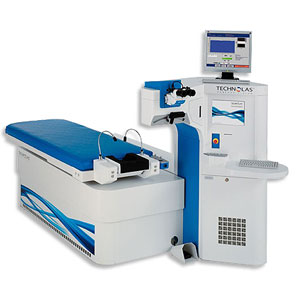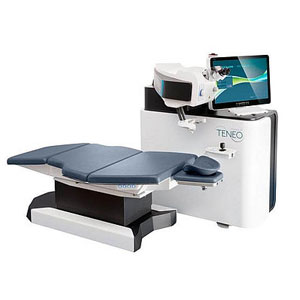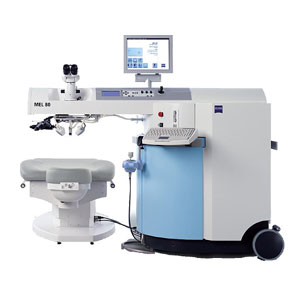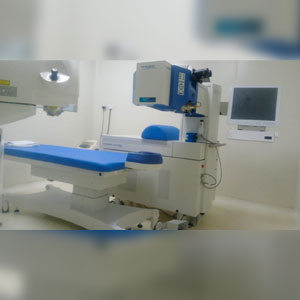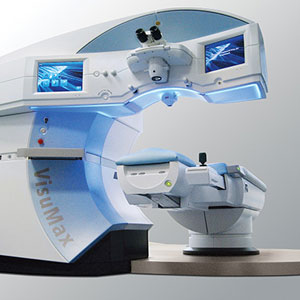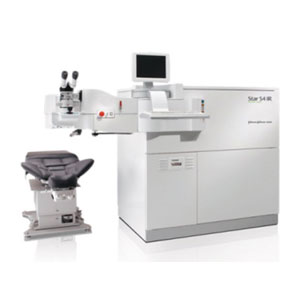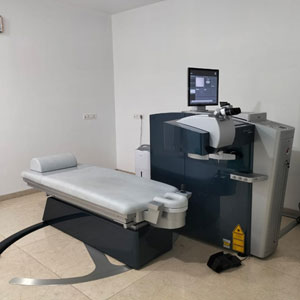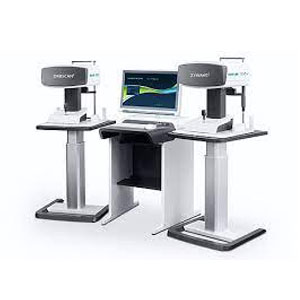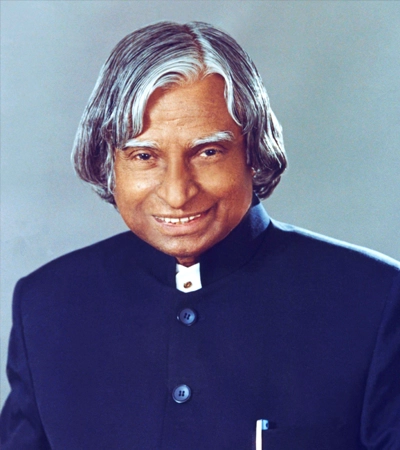
Refractive Errors
- Home
- Treatments
- Refractive Errors
Schedule
Your Appointment
What is Refractive Errors?
Understanding About
The prevalence of refractive errors, including myopia, hyperopia, astigmatism, anisometropia, and presbyopia, is significant globally and specifically in Germany, affecting nearly 70% of adults. Secondly, the majority of individuals with refractive errors rely on visual aids such as eyeglasses or contact lenses for correction, with only about 31% of adults foregoing such aids in 2011.
Additionally, refractive errors rank as the primary reason for ophthalmologist visits, constituting 21.1% of outpatient consultations, underscoring their significance in healthcare utilization. Moreover, their socio-economic impact is notable, evident in the expenditures on optician services, ophthalmologist care, and eye medications by the average German citizen.
Simple diagnostic tools, like the pinhole aperture, are instrumental in assessing impaired visual function due to optical factors, facilitating efficient identification of refractive errors even by non-ophthalmologists. Lastly, the global trend reveals an increasing prevalence of myopia, particularly in Asian countries, indicating the dynamic nature of refractive error epidemiology. Thus, this understanding encompasses not only the prevalence and impact of refractive errors but also diagnostic approaches and evolving global patterns.
Symptoms
Treatments
Precautions
Symptoms
- Reduced Visual Acuity: Refractive errors can lead to a decrease in visual acuity, affecting the ability to see objects clearly and sharply.
- Asthenopic Symptoms: These encompass a range of discomforts associated with visual strain, such as the sensation of dryness in the eyes, feeling of a foreign body in the eye, ocular reddening, double vision, rapid fatigue of the eyes, reluctance to read, and headaches.
Treatments
- Correction with diverging lenses (minus lenses).
- Contact lenses.
- Refractive surgery (e.g., laser treatment to flatten the cornea).
- Correction with converging lenses (plus lenses).
- Contact lenses.
- Refractive surgery (e.g., laser treatment to steepen the cornea).
- Correction with cylindrical lenses.
- For irregular astigmatism, improvement may be achieved by holding a pinhole aperture in front of lenses or using rigid gas-permeable contact lenses.
- Correction with reading glasses (with plus effect).
- Bifocal glasses.
- Trifocal glasses.
- Varifocal glasses.
- Contact lenses with various refractive power zones.
- Intraocular lenses with various refractive power zones.
- Monovision correction (one eye corrected for distance, the other for near vision).
- Correction of refractive errors in both eyes to minimize the interocular discrepancy
- Management of associated conditions such as amblyopia.
Precautions
- Assess near vision, especially for reading.
- Evaluate metamorphopsia using tools like the Amsler Grid.
- Address central visual field defects that affect reading.
- Regular eye exams for early detection and correction.
- Use both objective and subjective refraction methods.
- Ensure adequate correction to prevent visual acuity reduction.
- Monitor vision changes, especially in children.
- Fit and adjust glasses or contact lenses properly.
- Consider refractive surgery if suitable.
- Regular eye exams, especially for those with asthenopic symptoms.
- Correct with appropriate lenses or consider surgery.
- Identify astigmatism through thorough eye exams
- Fit cylindrical lenses properly or consider gas-permeable contacts for irregular astigmatism.
- Regular eye exams, especially for those over 40.
- Use suitable reading glasses or multifocal lenses.
- Monitor changes in visual acuity and adjust accordingly.
- Monitor refractive errors in both eyes regularly.
- Detects and manages associated conditions like amblyopia.
- Consider specialized interventions for significant differences in refractive power.
Types of Refractive Errors
Different Types of
Refractive Errors
Before the Surgery
During the Surgery
After the Surgery
Before the Surgery
- Eye Examination: A comprehensive assessment of eye health, refractive error, and corneal thickness is conducted to determine candidacy for surgery.
- Discussion of Expectations and Risks: Patients engage in detailed conversations with their ophthalmologist regarding potential outcomes, risks, and any concerns they may have.
- Stability Evaluation: The stability of the patient’s refractive error is assessed to ensure predictability and long-lasting results.
- Contact Lens Discontinuation: Patients may need to stop wearing contact lenses temporarily to allow the cornea to return to its natural shape.
- Medical History Review: A review of the patient’s medical history, including past eye surgeries, allergies, and medications, is conducted to mitigate risks.
- Preoperative Testing: Measurements of corneal curvature, thickness, and pupil size help determine the most suitable surgical approach.
- Discussion of Postoperative Care: Patients are educated about the postoperative care regimen, including the use of prescription eye drops and follow-up appointments.
During the Surgery
- Surgery involves specific procedures like LASIK, PRK, or other advanced techniques.
- Typically performed under local anesthesia.
- Patients are often awake during the procedure.
- Postoperative care plan provided by an ophthalmologist is crucial for proper healing and optimal visual outcomes.
After the Surgery
- Follow the ophthalmologist’s postoperative care plan meticulously.
- Use prescribed medications, such as eye drops, as directed.
- Avoid rubbing or touching the eyes to prevent irritation or infection.
- Protect the eyes from bright lights and sunlight by wearing sunglasses.
- Rest and avoid strenuous activities as advised by the surgeon.
- Attend follow-up appointments as scheduled for monitoring progress and addressing any concerns.
- Report any unusual symptoms or complications to the ophthalmologist immediately.
Our Doctors

Dr. Kasu Prasad Reddy
M.B, D.O, MRCOphthCheif Cataract & Refractive Surgeon
Somajiguda
,
Telangana

Dr. P. Muralidhar Rao
MBBS, M.S, FIVRSr. Vitreo Retinal Surgeon
Somajiguda
,
Telangana


Dr. Anitha C Kamarthy
MBBS, M.SSr. Cataract & Glaucoma Surgeon
Somajiguda
,
Telangana

Dr. B M Anil Kumar
MBBS, D.O, FLVPEI, MBASr. Glaucoma Consultant
Somajiguda
,
Telangana

Dr. Vamshidhar
MBBS, DNB, FICO ( UK)Sr. Cataract & Refractive Surgeon
Somajiguda
,
Telangana
Refractive Errors
What Are The Symptoms Of Refractive Error?
How Do You Fix A Refractive Error?
There are a few simple solutions that are available to correct refractive error, including eyeglasses, contact lenses, or different kinds of surgery. Eyeglasses are the most common and simple solution. An eye care professional can measure you for a pair of eyeglasses for effective correction.
Contact lenses are a less common, but still popular treatment for correcting refractive error. They work by placing an artificial lens on the film of tears covering the eye’s surface.
Corrective surgery is a possibility for some patients. Corrective surgery options include refractive laser surgery and intraocular lens (IOL) implant surgery.
Can Refractive Error Lead To Blindness?
What Is Refractive Error?
How are refractive errors diagnosed?
Our Visitors
Eye-Conic Encounters
at Our Hospital

